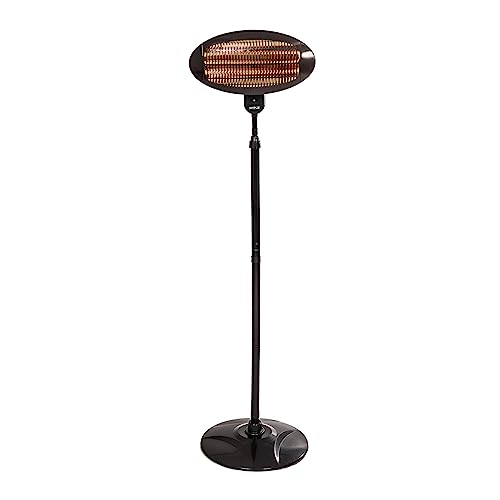How to Choose a Patio Heat Lamp Electric
When you want to heat your patio, you have numerous options. Unlike propane models that require refills, electric heaters can deliver instant heat by simply flipping a switch or pressing a button.

These units also don't emit gasses that might pose a health risk. Some units have adjustable heat settings to allow for different distances.
Heater Type
You can relax in your outdoor living space well into the evening and all through the year with the right patio heater. There are electric patio heater outdoor of patio heaters, including freestanding propane and natural gas models, as in addition to wall- or ceiling-mounted electric radiant heaters. Your choice depends on the size of your patio, current power sources, and your individual preferences.
The majority of patio heaters utilize electricity, natural or liquid gas to generate heat. They release heat through convection heating as well as radiant heating. The heat output is measured in watts and then converted to British thermal units (BTUs) to compare. Certain models come with adjustable heat settings to give you more flexibility.
Patio heat lamps incorporate the use of a burner that is mounted on a pole with a perforated screen that reflects the flames and radiates heat downwards to warm objects, people and furniture. Some patio heat lamps include reflective reflectors that sit over the burner, which can be silvered to decrease the amount of heat is lost upwards.
Gas patio heaters are the most popular patio heaters. They can heat multiple tables quickly and evenly. These patio heaters can be portable and run off propane tanks or plumbed into your natural gas line which is more convenience and lower upfront cost of installation, but requiring an ongoing cost of fuel.
A growing number of homes are equipped with natural gas lines, which makes them the perfect solution for those who prefer to use a gas patio heater. They're easy to set up, however they do require a specialized and functioning gas line to operate in a safe manner. Portable natural gas heaters come with extension hoses to help overcome this limitation, but they could be a trip hazard and may pose an additional fire risk when not being used.
Safety
Electric patio heaters can be used in covered areas, as they permit heat to radiate upwards and not outwards. However, they're not designed to be used under an open roof. The heater should be placed at minimum 18" from the walls adjacent to it or 6" from the ceiling to prevent fire hazards.
The propane and gas patio heaters are only suitable for installation in enclosed areas with durable covers designed for outdoor use. They are usually constructed of fire-resistant fabrics and have a roof which can be closed. These kinds of patio heaters have safety concerns relating to the flames and fumes they create. They should be placed away from items that ignite like curtains and chairs.
Follow the safety and instructions measures of the manufacturer when installing a patio heater or patio heat lamp. Choose a model that has UL and CSA safety certifications and be sure to read the owner's manual thoroughly. Be extra careful around children and pets and ensure that the heater isn't in their reach while it's in operation. Some free-standing patio heaters like EUROM have a built-in tipping protection that automatically shuts off the device if it falls over.
If your patio heater runs on a natural gas line it is essential to inspect the condition of the line on a regular basis and to test it for leaks by an experienced professional. If electric patio heater uk requires to be replaced, be sure to employ an authorized plumber. A professional will be able to determine if the line has been properly routed or if it should be routed through an underground pipe. Additionally, a professional can make sure the heater in the patio is plugged into an outlet that is GFCI (ground fault circuit interrupter) rated to protect against electrical fires and shocks.
Installation
The height at which a patio heater is positioned determines the amount of heat it will radiate into the area. The heater should be placed away from surfaces like plastic and wood that may deform. You can mount the heater on a wall, structure or other surface using traditional mounting brackets. Certain models come with a soft start, which reduces peak current to protect your circuits.
